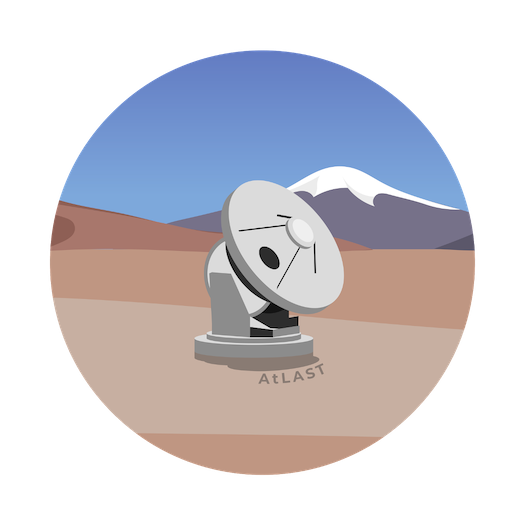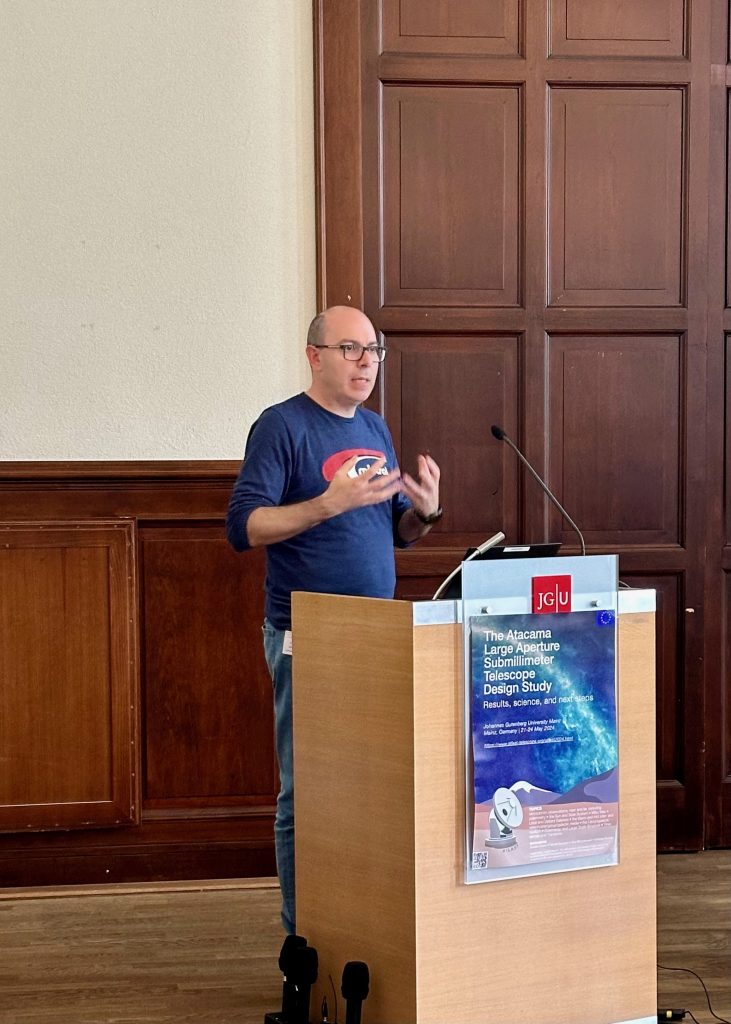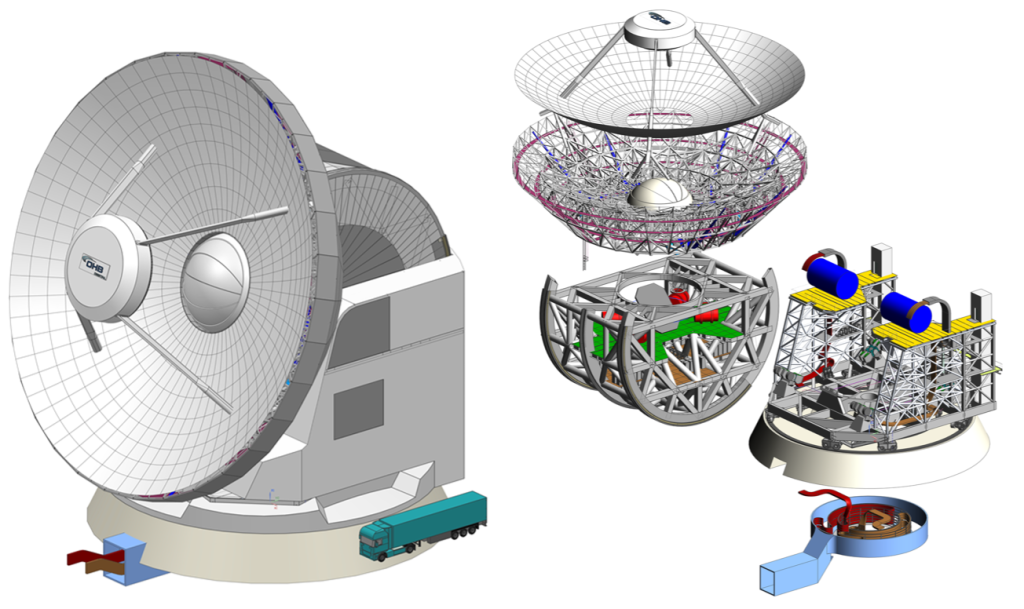


Last July, the European Commission gave the green light to the funding of the AtLAST2 project through the Horizon Europe program. The project called Consolidating Plans for the Atacama Large Aperture Submillimeter Telescope will begin its activities in early 2025. It is an ambitious project with the ultimate goal of launching the most powerful single-antenna observatory for observing the Universe in millimeter and submillimeter waves. The UCM will from now on participate as a new member of the consortium.
This new EU project continues the work carried out in the previous design study phase, also funded by the Horizon program, which lasted 3 years and concluded in August 2024. During this time, the preliminary design of the innovative single-antenna telescope, with a diameter of 50 meters, was developed. AtLAST will feature a large field of view of more than 1 square degree and will address numerous scientific questions in the decades to come after its construction and put in operation. The numerous areas of astrophysics in which AtLAST will have a significant impact range from solar physics and the study of variable objects and transient phenomena to the study of the physics of submillimeter galaxies in the early Universe. It will also help detailing the processes involved in star formation within our own Galaxy and make a giant step in the understanding of the sub-mm properties of the bulk population of normal galaxies.
The researcher Francisco M. Montenegro-Montes, a member of the GUAIX group at UCM and the IPARCOS institute, has played a key role in the development of the AtLAST Operations Plan, one of the working groups of the recently concluded Horizon project, led by Dr. Evanthia Hatziminaoglou from the European Southern Observatory (ESO). The experience Dr. Montenegro-Montes gained from working for over a decade in the Atacama Desert (Chile) as an operations astronomer and later as head of science operations at the APEX observatory of ESO has been particularly relevant for the development of this operations plan.
In addition to the enormous scientific potential, another major innovation of the observatory is its strong commitment to environmental respect and project sustainability. From the initial design phases, hybrid energy systems based on renewable fuels are being proposed, and energy recovery mechanisms are being developed to minimize the infrastructure’s energy consumption during operation. Furthermore, a distributed and remote operation plan is being considered, which will significantly reduce the need for staff to travel regularly to the telescope in the remote Atacama Desert, providing environmental, safety, and work-life balance benefits.


In this new AtLAST2 project UCM becomes a strategic partner joining the international consortium led by the University of Oslo, and will collaborate with institutions and companies from Europe, Japan, and South Africa. The UCM node is composed of ten researchers from the Department of Earth Physics and Astrophysics. The group counts with extensive experience in the development of astronomical instrumentation projects and their scientific exploitation. In the coming years, efforts will focus on detailing specific aspects of the operations plan, with emphasis on the development of: (i) an efficient interface between users and other stakeholders related to the observatory; (ii) procedures and tools that enhance the accessibility, interoperability, and exploitability of the scientific data; and (iii) an efficient infrastructure that allows scientific operations to be conducted remotely from various locations around the globe.
Related information:
- Main web site of the ATLAST project
- Compendium of scientific and technical publications related to AtLAST
- AtLAST Horizon Europe project – Towards an Atacama Large Aperture Submillimeter Telescope (grant agreement No. 951815)
- AtLAST UCM node web page
